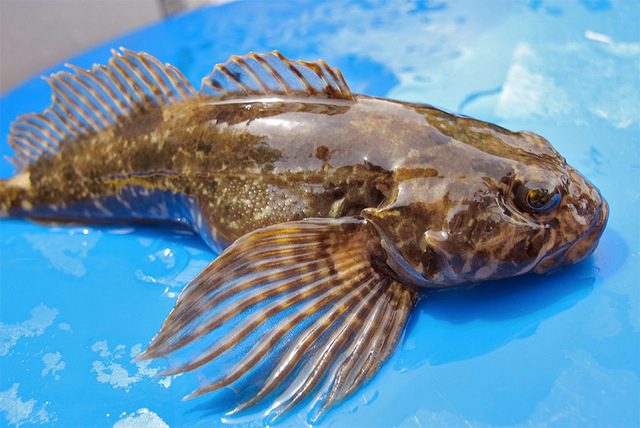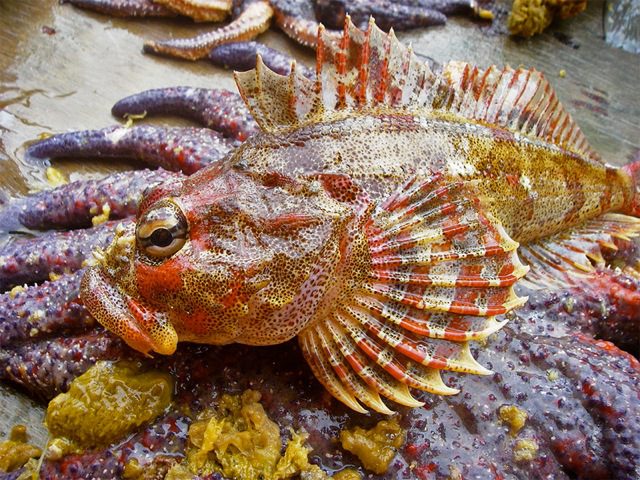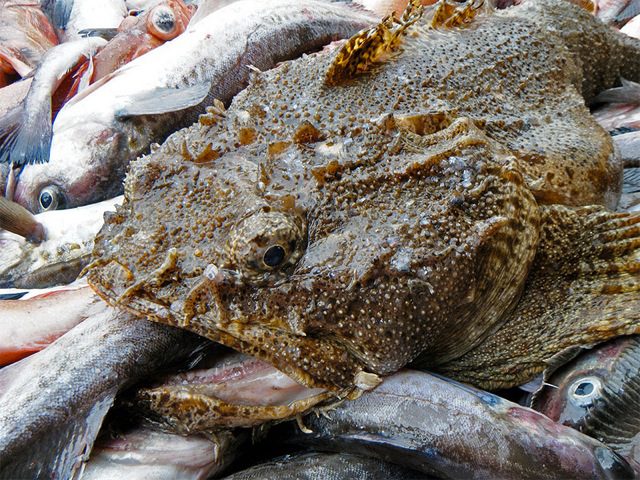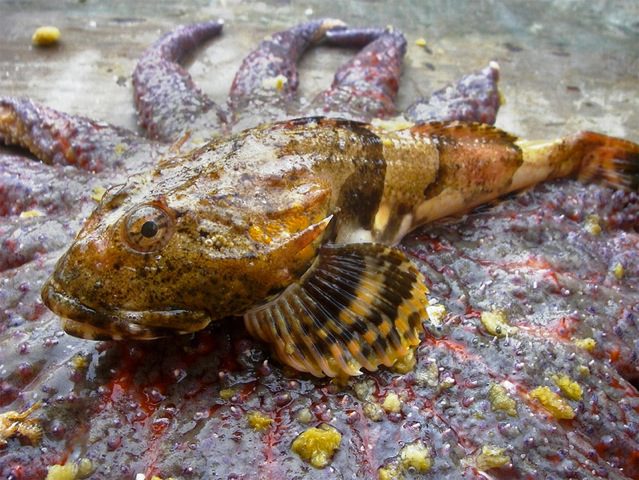Wednesday July 11, 2012

…are all names referring to sculpin – the often small, well camouflaged and inconspicuous fish we catch from time to time in our ongoing monitoring efforts. However, the riffle sculpin and prickly sculpin (Cottus gulosus and C. asper, see picture), common in California watersheds, are only the tip of the sculpin iceberg. With about 300 species of sculpin (family Cottidae) recognized worldwide, they are represented in most aquatic habitats, from alpine creeks to the deep sea. Though generally bottom dwellers (sculpin lack the gasbladder some fish use to regulate their buoyancy), juveniles can often be found in the water column after hatching, using currents as a mechanism of dispersal (e.g. White and Harvey, 2003).
Their appearances are as varied as their habitat; while some sculpin can display striking color patterns (such as the red Irish lord, Hemilepidotus hemilepidotus, and great sculpin, Myoxocephalus polycanthocephalus), others look rather menacing (for example, the bigmouth sculpin, Hemptripterus bolini). The highest diversity of these fishes (including the species pictured above) can be found along the north Pacific Rim, from Russia to California, where they are frequently the most abundant fishes in tide pools and on rocky reefs. While many members of the sculpin family boast menacing (and sometimes toxic) spines, fortunately for us the species we’re likely to encounter are harmless and easy to handle.



